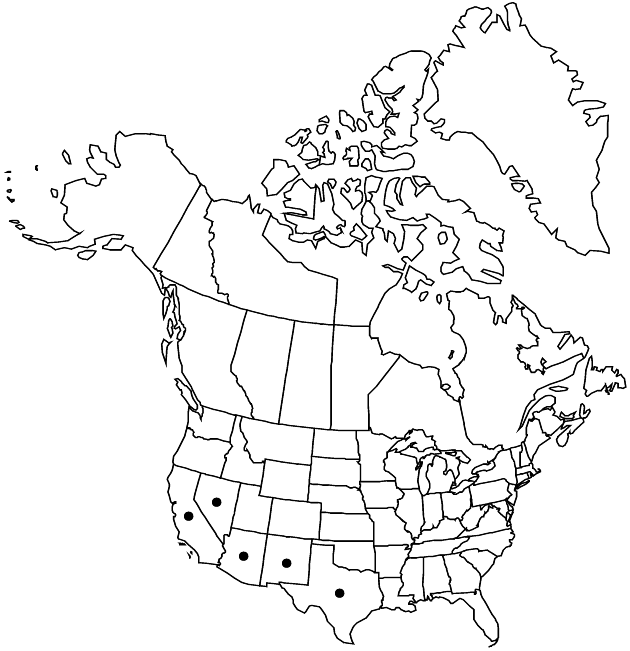Difference between revisions of "Baccharis brachyphylla"
Smithsonian Contr. Knowl. 5(6): 83. 1853.
FNA>Volume Importer |
FNA>Volume Importer |
(No difference)
| |
Revision as of 18:40, 24 September 2019
Shrubs or subshrubs, 20–100 cm (finely and densely branched from bases). Stems erect, green, slender and wandlike, striate-angled, glabrate proximally, hispidulous distally (near heads). Leaves present at flowering (reduced, sparse); sessile; blades (1-nerved) linear to linear-lanceolate, 5–17 × 1–2 mm (reduced distally to subulate bracts), margins entire, apices acute, faces glabrous (sometimes minutely papillose). Heads (on racemiform lateral branches) in paniculiform arrays. Involucres funnelform or campanulate; staminate 3–5.2 mm, pistillate 4–6 mm. Phyllaries lanceolate, 1–4 mm, margins scarious, medians green (hispid), apices acute to acuminate. Staminate florets (8–)12–18(–29); corollas 3.3–4.2 mm. Pistillate florets 8–18; corollas 2–2.8 mm. Cypselae 1.5–2.5 mm, 5-nerved, hispid; pappi 4.5–7 mm. 2n = 18.
Phenology: Flowering Jul–Aug.
Habitat: Canyons, dry washes, sandy deserts, mesas
Elevation: 300–1200 m
Distribution

Ariz., Calif., Nev., N.Mex., Tex., Mexico (Baja California, Chihuahua, Sonora).
Discussion
Baccharis brachyphylla is characterized by the densely branching habit, narrow stems, and small, linear-lanceolate leaves, and hispidulous hairs on stems, leaves, phyllaries, and cypselae.
Selected References
None.